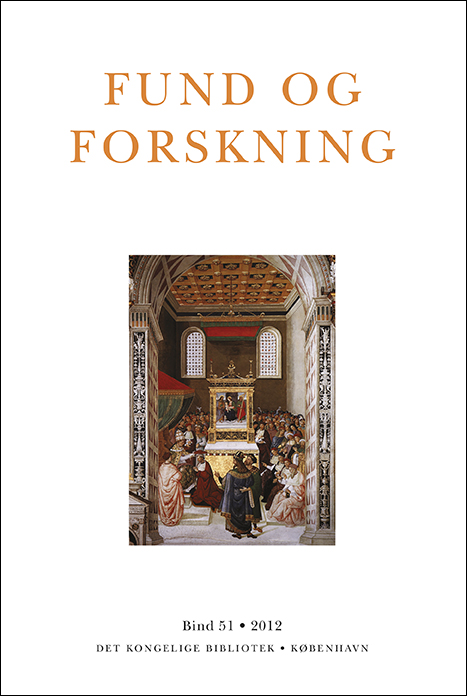Otto Sperlings 1.399 lærde kvinder og hans kilder
DOI:
https://doi.org/10.7146/fof.v51i0.41274Abstract
Otto Sperling (the younger, 1634–1715), the learned Danish historian and numismatist left an unfinished catalogue of 1,399 learned women from all countries and periods of world history – a so-called gynæceum. At his death Sperling’s manuscripts and papers remained with his colleagues, and most of them were included in the collections of The Royal Library in Copenhagen in 1721. However, the gynæceum together with Sperling’s bulky correspondence with numerous European scholars remained in the private collection of Hans Gram, the Chief Librarian of the Royal Library, and not until after his death in 1748 were they included in the Old Royal Collection; the gynæceum was kept under the title of Collectanea de foeminis doctis as GKS 2110 a-b 4o and bound in two volumes during the middle of the 19th century. Some loose papers closely related to Sperling’s project were later included in the New Royal Collection as NKS 596 4o as Adversaria ad foeminas doctas. Sperling’s gynæceum was the largest of his time, and colleagues at large urged him to publish it, which he had considered doing as early as 1688 (mentioned by Morhof in his Polyhistor). However, it seems that Sperling continued to collect more and more learned women rather than turning to the final editing process of his Collectanea. The planned biographical dictionary thus remained unpublished, but its international fame stimulated at least six Danish scholars to publish gynæcea of more limited, Danish-Norwegian scope. In modern times, Sperling’s magnum opus has raised little interest. The author of the present paper gives a general introduction to the two manuscripts, focusing on the kinds of ‘learnedness’ of the women collected by Sperling, on his working methods, and on the many types of sources he used, including small autobiographies solicited by Sperling from contemporary learned women. Besides a case-study of a ‘typical’ biography (Isabella Andreini), particular attention is given to Sperling’s treatment of the Danish-Norwegian learned women of his Collectanea.


